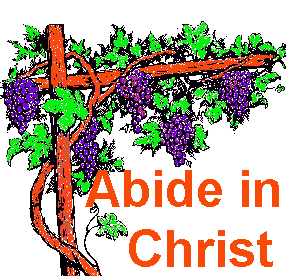How Then Shall We Live?
Simon Peter, a
bond-servant and apostle of Jesus Christ . . . .
This is now, beloved, the second letter I am writing
to you. . ." (1:1; 3:1).
AUTHOR:
The Apostle Peter is the stated author of the Second
Epistle of Peter. However, it should be kept in mind
that there is almost no external evidence to prove
that this epistle was written by Peter. No direct
quotation from it can be found in the patristic
literature prior to the beginning of the third
century. Eusebius, in the fourth century classes it
among the doubtful books rather than among those
that were accepted as of apostolic origin. The style
of the two epistles is different. The letter was not
widely known in the early church, and many people in
the second and third centuries A. D. were writing
under the name Peter. Therefore, some scholars deny
authorship of the epistle to Peter.
However, conservative
scholarship regards the epistle as genuine and
inspired. There is strong internal evidence for
Petrine authorship. The claim of the author himself
(1:1; 3:1); his imminent death as predicted by Jesus
(1:14; cf. Jn. 21:18); he claims to have been
present at the Transfiguration (1:16, 17; Cf. Mk.
9:5-7; Matt. 17:4, 5); he identifies himself as an
apostle of Jesus (3:2). It is consistent with the
character of the apostle whose name it bears. If
Peter used a different scribe or no scribe at all
would explain for difference in style between I and
II Peter. The epistle slowly gained acceptance into
the Canon. It has stood the test of criticism, bears
the stamp of the Spirit and speaks the truth of
God’s Word to each listening soul. II Peter 3:7-14
is a remarkable piece of evidence that this is
inspired by the Holy Spirit. It has such a
remarkable grasp of facts in the light of the
discovery of atomic scientists.
DATE:
Assuming Petrine authorship, Second Peter was
written between A. D. 64 and 68. Since Peter is
anticipating his death (1:14) shortly before A. D.
67 would be the correct date. If it was written
about A. D. 67 then one reason for the letter not
receiving wide publicity would be because the
recipients were afraid to acknowledge the possession
of it out of fear for their lives.
PLACE:
Most scholars consider the city of Rome to be the
place of writing.
RECIPIENTS:
It was written to all believers, and especially to
those who had received the previous letter three
years before as described in 3:1. It was directed to
Christians living in northern Asia Minor, among whom
Peter had minister at some previous time. Between
the writings of the two epistles, a change had taken
place in their circumstances. The first epistle
warned of outside dangers, the second epistle is
concerned with internal danger of apostasy and false
teachers.
PURPOSE:
It warns against false teachings, corrects denials
concerning the Second Coming of Jesus, and urges
diligence and holiness. He is dealing with dangers
from within the church. They are facing serious
attack from people who are "friendly" to the
Christian faith. False teachers have infiltrated the
churches and turning many believers from the pure
and sincere faith. Every true believer has a
responsibility to guard the truth.
THEME:
Be on the guard against false teachings and live
with a view toward the return of Christ.
KEY VERSE:
3:11
KEY WORDS:
"know," "knowledge" occurs sixteen times in three
chapters.
RELATIONSHIP BETWEEN
JUDE AND II PETER: In content and
language there is a resemblance between the two that
is too strong to be accidental, though there are
marked differences as well. If one is dependent on
the other, which is the original? E. F. Scott
writes: "Thus we have no choice but to regard II
Peter as either a genuine writing of the Apostle, or
as a later work which was deliberately composed in
his name." Merrill C. Tenney adds: "It seems
incredible that so barefaced a forgery should have
been foisted on the Church without any protest. This
document has not simply taken Peter’s name, but it
has professed to grow out of his experience."
If the internal evidence
be taken at face value, it is plain that the epistle
was written near the close of Peter’s life, when
persecution was threatening both him and the
churches to whom he wrote (cf. I Pet. 4:14-19). In
writing his first letter he had the aid of Silvanus
(Silas) (I Pet. 5:12), who could smooth out his
style, and who perhaps made several copies for
general circulation, thereby insuring a wider
knowledge of the epistle in the churches. The second
epistle, if written without such aid, would show the
cruder style of a Galilean fisherman, and would have
a narrower distribution.
It is hard to avoid the
conclusion that Jude is quoting Peter rather than
vice-versa. If so, Jude becomes an external witness
for the early date of II Peter rather than making it
a late reproduction of Jude.
PROPHECY:
One of the most definitive passages on inspiration
in the New Testament is found in 1:21. It asserts
unmistakably that the message of the Old Testament
Scriptures is the authoritative voice of God which
must be interpreted in the light of total
revelation. Cf. II Tim. 2:15 and 3:16. The allusion
to Paul’s epistles as "scriptures" in II Pet. 3:16
would indicate the beginning of the canon of the New
Testament, though Peter claims no more for Paul’s
writings than Paul did for his own (I Thess. 2:13).
DELAY IN THE COMING OF
CHRIST: Undoubtedly many in Peter’s
day were disappointed that the Lord did not come in
their lifetime. Some were skeptical of the
Christian’s teachings and scoffing at them. Peter
reminds them the delay of Christ’s return was not
the result of a mistaken prediction, but was rather
a sign of God’s desire to give man a longer
opportunity to repent and believe. God lives outside
the dimension of time.
Title: Introduction to 2
Peter
Series: A Look at the
Book



